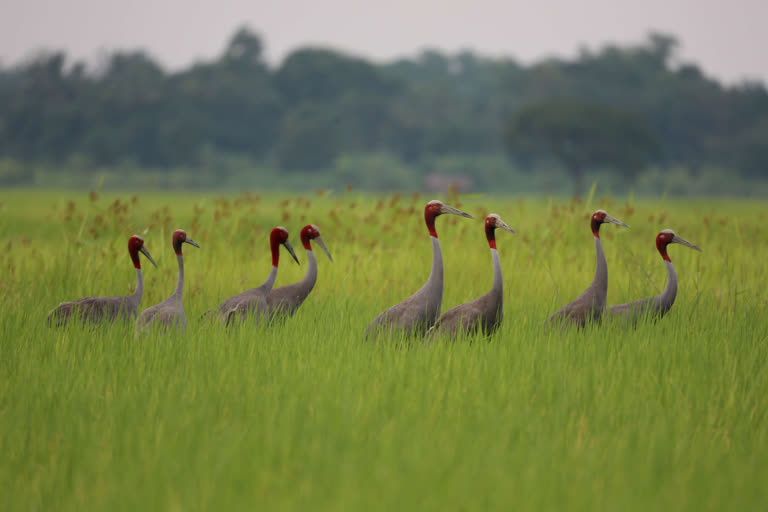New Delhi:The world's tallest flying bird Sarus Crane ( Grus antigone) population has shown a steady decline over the past few years in Uttar Pradesh.
Uttar Pradesh's state bird is posing a big threat from high tension power transmission line.
Sarus is listed as a vulnerable speciesby the International Union for conservation of Nature(IUCN). This non-migratory bird is found in the parts of the Indian Subcontinent.
WTI deputy director Sameer Kumar Sinha Wildlife Trust of India (WTI) officials express concern following the fact that six to seven birds (Saras) die every year in UP due to the overhead high tension power transmission line.
Speaking to ETV Bharat WTI deputy director Sameer Kumar Sinha said, "It's a major concern as 6-7 Saras bird die in UP every year due to the high tension power line. This issue need to be resolved."
He said that WTI has started involving the farmers in the protection and conservation of the Saras.
The WTI along with Tata Trust is carrying out projects in eastern UP for the protection and conservation of this tallest flying bird.
Saras Crane was once majorly found in Uttar Pradesh, Bihar, Rajasthan, West Bengal, Gujarat, Madhya Pradesh and Assam.
Its no longer found in Bihar and it can be rarely seen in West Bengal and Assam now.
"It is found in western UP mainly. But we have started the project in eastern UP as we have found many Saras in that area," said Sinha.
In rice-dominated districts of UP, Sarus abundance was highest in the western districts, intermediate in the central districts, and minimal in the eastern districts. Its abundance was positively associated with the percentage of wetlands on the landscape.
"We have formed Saras protection committee in the villages of eastern UP in which 13000 families are involved in the protection and conservation of Saras. We have tried to build an emotional bond between farmers and Saras birds," Sinha further added.
The steps for conservation of Saras has yielded positive results as the eastern UP sector is now becoming a major habitat for Saras.
The bird is under threat due to habitat loss resulted from an increased need for agricultural land, indiscriminate use of pesticides, residential and commercial development and drastic climatic changes due to pollution.
In India, the bird is held as the symbol of unconditional love and eternal devotion. The total population of the bird in India is approximately between 8,000 to 10,000.
Also Read:Digvijay committed 'big sin' by not voting, says Modi
